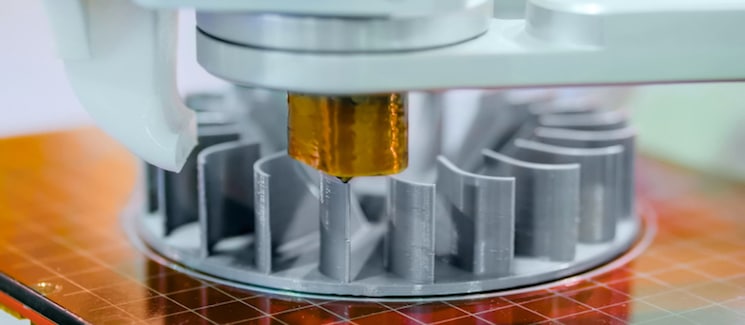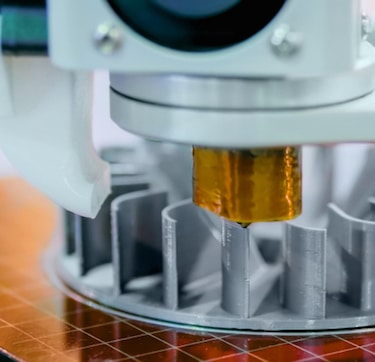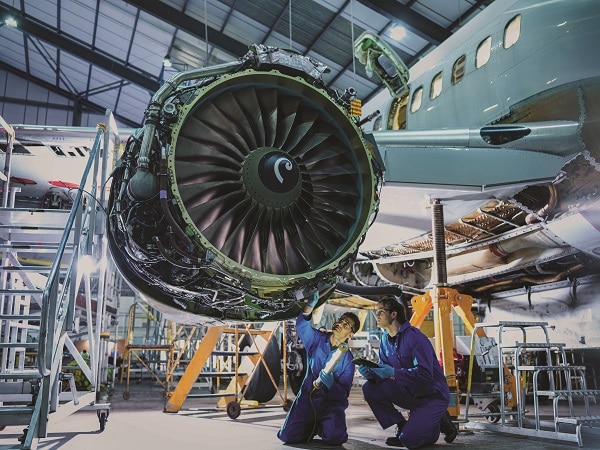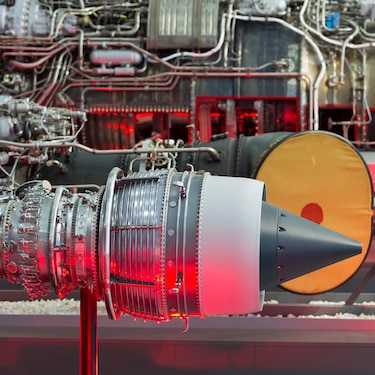
The Aerospace & Defense manufacturing industry can be characterized as one of risk reduction and slow change. With quality, safety, and regulatory compliance such a critical component, many manufacturers have preferred to stick with “tried and true” production models and technology. Today this is now changing. Digital technologies have matured and are now much more reliable. The cloud is gaining much attention. Modernization and globalization initiatives are picking up steam, forcing transformation in even the largest and most stubborn Aerospace & Defense manufacturers.
I suspect we’ll look back at this period as one of extreme disruption and innovation for the industry. Based on what we are seeing with our customers and prospects, here are five interesting trends that are shaping the aerospace and defense industry’s future.
1. Increasing Digitalization
A&D value chains have become quite complex. In response, many companies are optimizing their operations for maximum flexibility through across-the-board modernization investments. These range from process and product designs to increasing the use of digital technology before, during, and after manufacture. Companies are replacing and improving their legacy designs to produce new components – often in an accelerated timeframe. This new playing field means that many companies can’t afford to be delayed by paper-based production or manual processes.
2. Additive Manufacturing
Additive manufacturing or 3D printing has been around for a while, but its impact is finally beginning to be felt. Today, this type of production process can create custom parts virtually anywhere and can do so with designs that are stronger and lighter, consuming fewer materials. It is no wonder the industry has welcomed this innovation. “3D printing technology has the potential to revolutionize production time and precision,” according to a June 2021 report published by analysts at ResearchGate. Some companies are trying to take it a step further by compressing the design and manufacturing process with additive printing.
Learn more from this article, Why So Many Manufacturers are Unprepared for Digital Transformation in 2021
3. Smart Materials
Smart materials are the next step in cutting-edge A&D innovation. Aerospace & Defense manufacturing will be the key driver of demand for smart materials. By 2025, the global Smart Materials market is expected to be valued at USD 98.2 billion (source). The possible uses are almost limitless: electronic sensors, actuators, self-healing fuselages, and more. It will improve the durability of modern aircraft, too— smart materials are immune to the typical conditions that destroy electric motors.
4. Multiphysics Simulations
Simulations are enabling manufacturers to accurately gauge the design and safety of critical systems, test aerodynamics, simulate emergency conditions like lightning strikes, or virtually any other condition that can occur in real life. This helps engineers create higher-quality designs and reduce risk. Northrop Grumman’s B-21 Raider program is a great example of what is possible when embracing a “Model-Based Everything” approach, described as a “marvel of digital development,” based on using integrated, high-fidelity models that are shared across all technical disciplines and program partners. This methodology has loosened the boundaries of engineering design while providing new levels of control over the entire production process.
5. Risk Reduction Through Data
As we advance towards an uncertain future, risk reduction will remain a major focus for A&D manufacturers. The modern market environment is unpredictable and competitive, forcing manufacturers to optimize costs in any way possible. Digital technologies aimed at risk reduction are poised for significant growth. Anything that can reduce unscheduled downtime or improve productivity will be seen as critical for investment. This helps explain why manufacturing intelligence and the ability to view and act upon real-time analytics are now gaining traction. Companies today can gather huge amounts of data throughout the production process and through sustainment. Look for this trend to gain further momentum.
Conclusion
These are just a few of the important trends in a rapidly transforming industry. Aerospace & Defense manufacturing is being thrust into disruption and innovation, but the good news is that digital technology has matured and is ready to respond to the new environment. Manufacturers will be able to do things that were never possible just 10 years ago. Digital transformation will enhance manufacturer’s abilities to leverage these trends and compete in the future.
What will the A&D industry look like in 2030? I can’t predict that, but I can predict there will be incredible innovation in the coming years. And digital transformation will be both a driver of change and the means to cope with that change.






